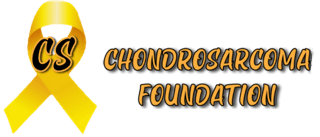Genomic Characterization of Chondrosarcoma Reveals Potential Therapeutic Targets
Genomic Characterization of Chondrosarcoma Reveals Potential Therapeutic Targets
Michael J. Wagner, MD; Erica M. Pimenta, MD, PhD1 ; Nathan W. Sweeney, PhD ; Elizabeth T. Loggers, MD, PhD; Jesse L. Roberts, MD; Elyse Brinkman, MD; Eleanor Y. Chen, MD, PhD ; Robert Ricciotti, MD; Candace L. Haddox, MD; Rachel Berg, MS,; Binyam Yilma, MPH; Melissa C. Stoppler, MD; James L. Chen, MD; and Lee D. Cranmer, MD, PhD
ABSTRACT
PURPOSE Chondrosarcomas are rare cancers of cartilage with limited systemic therapy options. To identify potential therapeutic targets, this study investigated the molecular and immune landscape of three chondrosarcoma subtypes using a large database of clinical-grade sequencing results.
METHODS Deidentified records from patients with a histologic diagnosis of conventional, dedifferentiated, or mesenchymal chondrosarcoma sequenced by the Tempus xT DNA assay were included. Microsatellite instability (MSI) and tumor mu-tational burden (TMB) were determined from sequencing data. The expression of PD-L1 and mismatch repair enzymes was evaluated in cases with available
immunohistochemistry (IHC) data.
RESULTS Of the 149 patients, 103 had conventional chondrosarcoma, 31 dedifferentiated chondrosarcoma, and 15 mesenchymal chondrosarcoma. Across the cohort, 44% (n 5 65) had an IDH1 or IDH2 mutation. No cases were MSI high. One conventional chondrosarcoma patient had a TMB >10 mut/Mb. Among 112 patients with available PD-L1 IHC, 10% of conventional (n 5 7), 45% of dedifferentiated (n 5 13), and 17% of mesenchymal cases (n 5 2) were PD-L1–positive. The most common somatic alterations were in IDH1 (34%) and TP53 (28%) in conventional chondrosarcoma; TP53 (68%), TERT (65%), IDH1 (39%), IDH2 (39%), CDKN2A (35%), and CDKN2B (35%) in dedifferentiated chondrosarcoma; and HEY1-NCOA2 fusions (87%) and CDKN2A (20%) in mesenchymal chondrosarcoma. MTAP was deleted in >10% of each subtype, and potentially actionable PDGFRB mutations were identified in 13% of dedifferentiated chondrosarcomas.
CONCLUSION These findings reinforce therapeutic efforts to target IDH signaling in chondrosarcoma, provide insight into varied subpopulation response to immune checkpoint inhibitors, and identify new potential therapeutic targets for clinical development in chondrosarcoma.
genomic-characterization-of-chondrosarcoma-reveals-potential-therapeutic-targets.pdf
